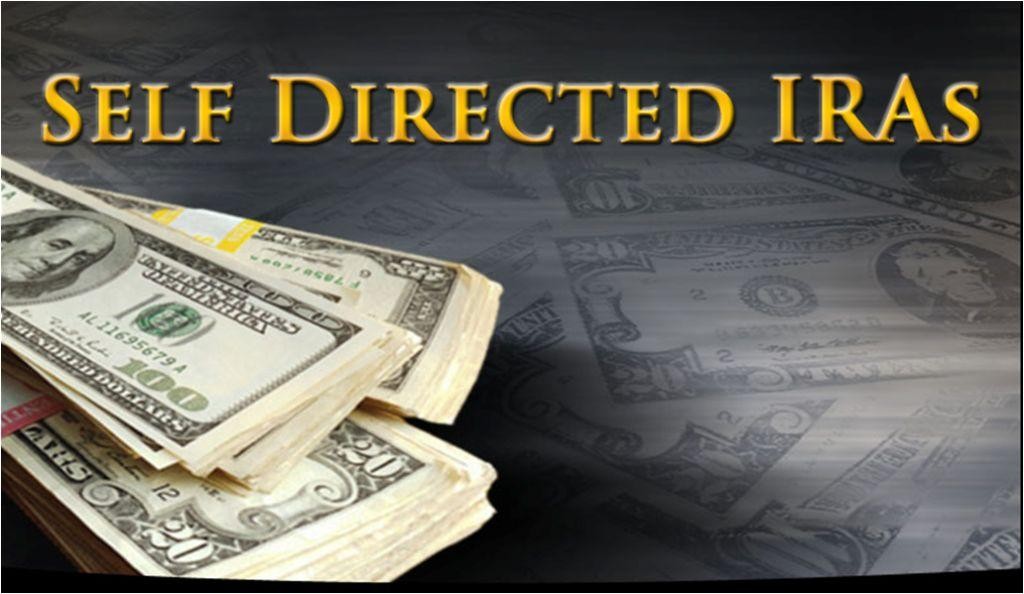SelfDirected IRA Diversification
Post on: 27 Апрель, 2015 No Comment

Using Alternatives to Stocks in Retirement Accounts
What do boat slips, fishing rights for sablefish in Alaska and seahorse farming have in common?
Water, for one thing. More importantly, they are all investment possibilities within a self-directed IRA (individual retirement account).
Initially I had my funds in a pension and 401(k). When I retired, I didn’t know what to do with those funds, Tony Moreno, a self-directed IRA holder who is planning a seahorse farm off a private island near Honduras, said. When I learned about the self-directed IRA. and found how much flexibility there was in what I could invest in, that seemed to be the most logical place for me to put that money.
Moreno said he began to do research into international real estate, looking for sandy beachfront property. Eventually, he decided to try to purchase a private island.
I was thinking of doing something like creating a subdivision and selling lots. but when I went there and saw [the island], I realized it wasn’t really suitable for that, Moreno said, because much of it is government-protected mangrove forests. One of the things I came up with was to use the island for creating a seahorse repopulation effort. by creating a habitat area on the outskirts of the island.
Visitors to the day resort Moreno is building on the island will be able to view the seahorse farm. Moreno said he expects an influx of visitors to the area because Carnival Cruise Line is building a $50 million terminal on nearby Roatn Island. (See our article on Top 5 Places to Buy Caribbean Real Estate for more information on Roatn Island.)
Traditional IRAs are limited to investments in stocks, bonds and mutual funds. Self-directed IRAs, on the other hand, are specialized accounts that allow their holders to invest in anything except for life insurance, collectibles and investments that would personally benefit them or close family members, as restricted by the IRS.
Real estate and businesses, among other things, are common investments within self-directed IRAs.
As a general rule of thumb, the IRA is going to be prohibited from being invested with or in a way that benefits an individual that is [in] a close, personal relationship to that IRA holder, David Nilssen, CEO of Guidant Financial Group, a self-directed IRA facilitator, said. For example, I can’t buy a rental inside my self-directed IRA and rent it to my mother.
As millions of baby boomers approach retirement, pensions are on the wane and Social Security is poised to become unreliable. That leaves many people depending heavily on their retirement accounts to fund their retirements.
As people live longer, you know, retire at 65, live to 85, that’s 20 years they’ve got to provide for themselves, Tom W. Anderson, CEO and founder of PENSCO Trust Company. a self-directed IRA custodian. said. No longer can you just park your money in a retirement account and expect to get by.
People have got to start managing these retirement accounts, and I think the self-directed industry is a great way to do it, he said.
These shifts are causing many people to take charge of their retirement funds through a self-directed IRA, sometimes known as a real estate IRA. We’re seeing [participation] really pick up, especially within the baby boomer generation, Nilssen said.
Self-directed IRA awareness
IRAs came into existence when the Employee Retirement Income Security Act of 1974 (ERISA) was passed. The whole point behind ERISA was to transfer the responsibility of retirement investing from the employer down to the employee, Nilssen said. Because of some of the mismanagement and abuse within some of those pension funds, Congress actually passed the responsibility from the corporations to the individuals.
And while people tend to be familiar with the retirement funds created by ERISA, relatively few seem to be aware that they can have freedom in addition to responsibility when it comes to their retirement accounts.
Many people don’t have self-directed IRAs simply because of a lack of awareness, there’s absolutely no question about it, Anderson said. 98 percent of the IRA market, which is approximately $3.7 trillion, is associated with the traditional providers. Anderson said he attributed much of that to the sheer number of marketing dollars the traditional providers have at their disposal.
Nilssen said he agreed. The banks and brokerage houses. with heavy marketing dollars created a misconception that all you could do was buy stocks, bonds and mutual funds, which is not true, he said, and although the [self-directed] industry is gaining a lot of traction now, it has taken a long time for that to. catch up.
90 percent of the IRA market is dominated by firms that don’t give you the full bandwidth of opportunity to diversify. They basically will allow you to diversify within whatever set of investments they offer, Anderson said. People should have the choice.
Diversification
One of the main advantages of a self-directed IRA is that they allow their account holders to achieve diversification; account holders can make both traditional and alternative investments within self-directed IRAs.
If there’s any lesson to be learned from the crash the stock market went through in the late 1990s, early 2000s, it’s that having all your eggs in one basket can be problematic, Nilssen said. The self-directed IRA allows people to diversify into many different assets, but also to be flexible with following the market trends.
We’re seeing a lot of clients pursuing all forms of real estate: residential, commercial, industrial, Nilssen said. We’re seeing a significant trend of people going offshore and purchasing foreign real estate. Nilssen said that many clients choose real estate so that they can have a portion of their retirement funds in a fixed, tangible investment that also has a potential for profit.
Many people who purchase real estate within self-directed IRAs are buying in cash, Nilssen said. So what ends up happening is that the rental income that they’re generating is pure profit back into the IRA, and so that allows them to have consistent cash flow off of these retirement investments. And that’s not something you see traditionally.
Although popular, real estate is just one of many investment options available to holders of self-directed IRAs. Because of the wide range of investments available, self-directed IRA holders can ensure that their retirement funds are spread across diverse investments and markets, making them more secure.
We’re seeing a lot of people engaging in lending practices. They’re originating mortgages for homeowners or they’re lending money out to peers for business activity or things of that nature. Nilssen said he also seen a surge in entrepreneurship. We’re seeing a lot of people buying businesses or franchises.
Account holders are even allowed to use leverage, which is a great benefit of the self-directed IRA, Nilssen said. It’s a tremendous wealth-building tool.
Banks will make non-recourse loansmeaning that the account holder does not have to make a personal guaranteeto lend money to IRAs. It’s only been in the last four or five years that any banks would actually loan to an IRA, Anderson said.
The North American Savings Bank is one of the lenders now willing to provide non-recourse loans to anybody in the United States to buy property anywhere in the United States through an IRA, Anderson said. Because the loans are non-recourse, The lender can’t look towards the IRA owner. if the IRA fails to make the mortgage payment. All they can do is take the property back. Because of that, the lender wants more down.
If a self-directed IRA holder wanted to purchase real estate, Nilssen said, a bank would typically require a down payment of 40 to 50 percent.
This would allow a person to effectively double their buying power, so if they’ve got $100,000 in their retirement plan, they could effectively purchase $200,000 in real estate, Nilssen said. I think that’s a tremendous benefit because it allows them to participate at a greater level.

The whole idea of using leverage in an IRA is the same as using leverage outside the IRA: You can accelerate your gain. You’re going to make more money using leverage, Anderson said. You’re going to probably net a higher yield after tax than you would have if you didn’t use leverage.
One ramification of such investments, Nilssen said, is that any profits made on the money lent to the IRA will be taxed. Self-directed IRAs are subject to the unrelated business income tax (UBIT).
Still, You get to deduct the same deductions you get when you buy real estate outside of an IRA, namely depreciation, mortgage interest, repairs, Anderson said.
Responsibility and choice
Investors who have expertise in a particular area are especially well suited for self-directed IRAs because they can make educated investment decisions when given control of their funds.
If your son just turned 16 and he’s never driven a car, are you going to give him the keys to a Ferrari? Probably not, because he might crash, Anderson said. He recommended that only seasoned investors participate in self-directed IRAs because they have to be prepared to make the decisions.
It is a little more complicated. It’s not like sitting at home at night at 11:00 and clicking on 100 shares of IBM, he said. It’s really for the person who’s. knowledgeable about the particular type of investment they’re going to pursue and has the ability to self-direct.
Moreno said he found control over the investment process to be one of the main benefits of a self-directed IRA. It gives me a little more control over my money and more flexibility about how I can invest it, he said.
Self-directed IRAs require extensive due diligence and knowledge, because the account holders themselves make each investment decision, unlike with traditional IRAs. For Moreno and others with experience in researching and investing, this is a welcome change.
It allows people to invest in their core competency. If they understand stocks, then they can invest in the securities market. If they understand real estate, then they can use that knowledge to make money, Nilssen said. This industry will allow people to pursue the investments that they know and understand.
Self-directed IRA custodians
As far as setting up a self-directed IRA, I imagine you can do it yourself, but you have to know what you’re doing, and if you don’t do it right, then you’ve basically compromised the integrity of your IRA, so I didn’t want to take that chance, Moreno said. And I felt that the cost of setting it up would be worth it.
Because there is a lot of paperwork and processing involved when investing with a self-directed IRA. custodial companies have employees who project manage and process investments from start to finish, Nilssen said. Because of that, the cost to participate with a custodian can be fairly high.
A custodian is essentially. a bank, a depository, Nilssen said. You request them to make the investment on your behalf.
Anderson said that investors should do thorough research and exercise caution when choosing a self-directed IRA custodian. People should be advised to deal with a regulated financial institution, he said.
The industry is largely unregulated at this point, and thus there are areas of abuse to look out for, Nilssen said. There are a lot of discount services available; however, it’s my belief that you get what you pay for.
Still, he said, for those who have done their due diligence, the opportunities are tremendous, and so I definitely would encourage people to investigate this further.














